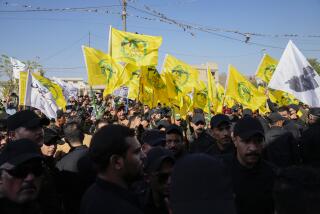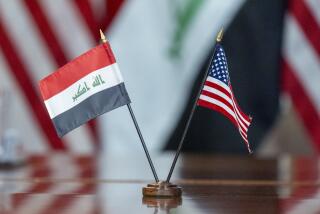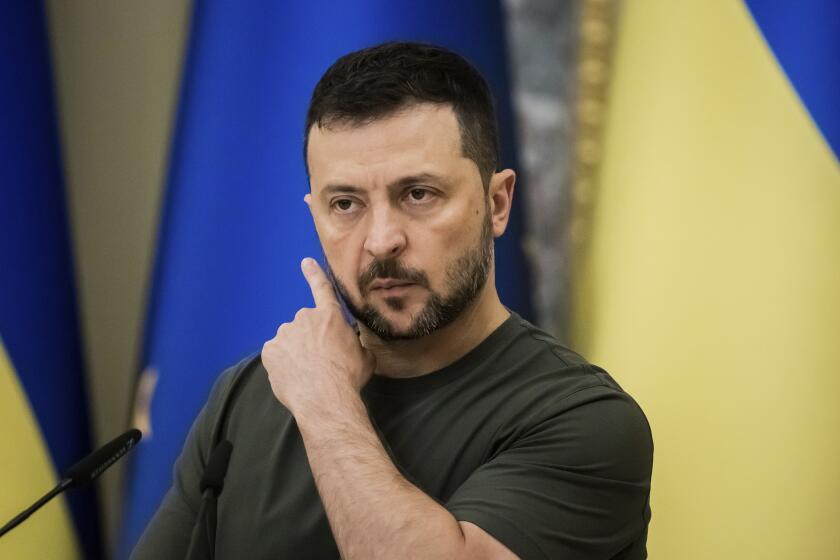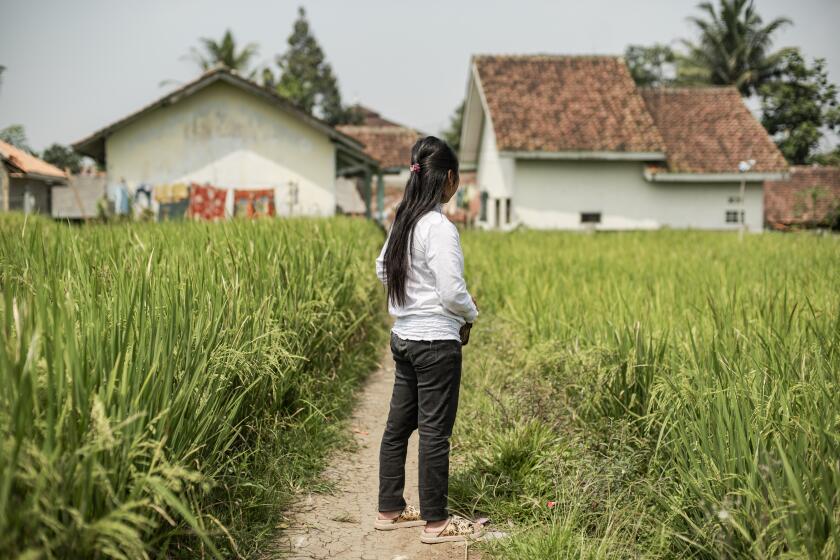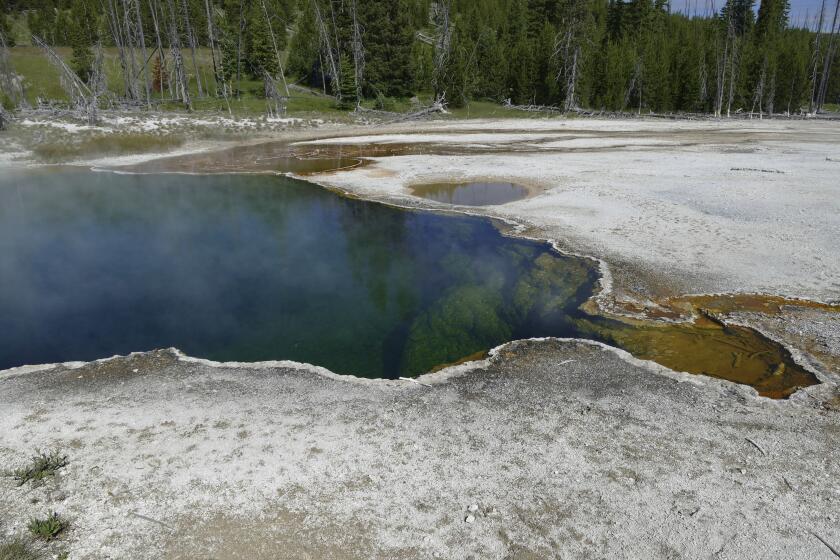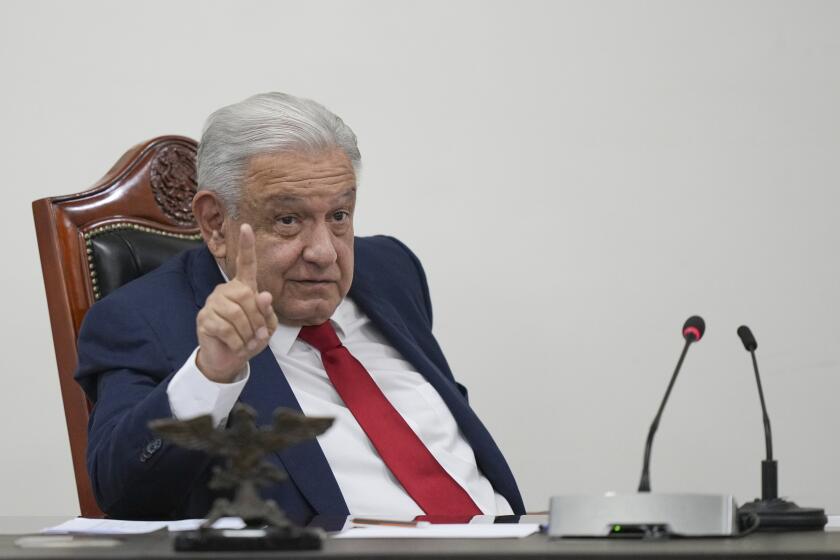Purported executions in Iraq recall mass sectarian killings
In a chilling reminder of the mass sectarian killings eight years ago, an Al Qaeda splinter group that is waging a major offensive in Iraq posted gruesome photos online Sunday purporting to show the summary executions of dozens, perhaps hundreds, of Iraqi soldiers, and indicating that Shiite Muslims were the principal targets.
The Islamic State of Iraq and Syria, or ISIS, is believed to have captured hundreds or even thousands of Iraqi soldiers when its fighters rolled through northern and western Iraq over the last week, seizing two major cities and wide swaths of territory. The offensive, a spillover of the civil war in Syria, left Western governments and Arab neighbors scrambling for a strategy in response.
Already, the crisis has created common interest among some unlikely partners. Iranian President Hassan Rouhani said Saturday that Tehran would “consider” working with the United States, despite decades of enmity, to bolster the shaky Shiite-led Iraqi government, with which Iran has strong ties. He added that Prime Minister Nouri Maliki had not contacted Iran for assistance.
On Sunday, Sen. Lindsey Graham (R-S.C.), who serves on the Armed Services Committee, called for the U.S. to talk directly with Iran to devise a plan to stop what he characterized as an ISIS march toward Baghdad. “If ISIS is not dealt with, that’s the staging area for a new attack on the United States,” Graham said on CNN.
The U.S. State Department announced that it was evacuating some of the staff from its massive embassy in Baghdad and bringing in additional American security personnel.
The ISIS offensive appears to have taken the Iraqi government by surprise and is threatening to split the country. As the militants, adherents of the Sunni sect of Islam, seize territory in Sunni-majority regions, ethnic Kurds are taking advantage of the government’s weakness to solidify control over northern, Kurdish-majority areas where they have long sought independence.
“Iraqi army? There is no Iraqi army,” sneered one commander of the Kurds’ peshmerga militia, which stepped into a vacuum in and around the vital oil center of Kirkuk after the regular army fled. The commander, who would give his name only as Brig. Gen. Fattah, was in charge of an army outpost just south of Kirkuk that had been abandoned by the regular army as it fled the advancing ISIS forces.
Kurdish fighters and commanders intend to defend the area against ISIS incursions, but might not be easily persuaded to cede control back to the Iraqi government.
“Peshmerga is not there at their demand, and will not leave at their demand,” said Hemin Hawrami, the foreign relations chief for the Kurdistan Democratic Party.
With the purported execution photos of Iraqi soldiers being widely shared on social media, the Iraqi military acknowledged that it was aware that some of its soldiers had been killed by their ISIS captors. But it did not provide a specific number, and there was no way to verify the militant group’s claims.
The U.S. State Department, referring to unconfirmed reports that 1,700 soldiers had been executed, said such a massacre would represent “a true depiction of the blood lust that these terrorists represent.”
Reports and boastful rhetoric from ISIS suggested its fighters were inclined to release Sunni captives while marking Shiites for execution. It was unclear how ISIS identified Shiites, but Iraq has a long history of animosity between the two sects.
In the country’s last major spasm of sectarian violence, between 2005 and 2007, hundreds of mutilated bodies a week were dumped in the streets of Baghdad or the Tigris River — the victims of abductions and killings based solely on whether they were Sunni or Shiite.
The Iraqi military’s chief spokesman, Lt. Gen. Qassim Moussawi, told the Associated Press that the photos posted by ISIS were believed to be authentic, and confirmed the killings of some captured soldiers. But he did not say how many were believed to have died.
A week into the ISIS offensive in the north and west, scattered violence began breaking out elsewhere. Multiple explosions in Baghdad left at least 15 people dead, AP reported, and six others were reported killed near the town of Baqubah, in central Iraq, when a recruitment center for volunteer fighters was hit by mortar rounds.
There were no reports of new battle gains by ISIS, which has threatened to push into Baghdad. Civilians have been flocking to take up arms to battle ISIS, notorious for its use of brutal tactics that include beheadings, crucifixions and amputations of limbs.
The country’s main Shiite spiritual leader, Grand Ayatollah Ali Sistani, issued a call Friday for the Shiite faithful to defend their holy places, but later clarified that arms should be taken up only in a lawful framework.
The killings of captive Iraqi soldiers were said to have taken place in the Iraqi province of Salahuddin and the environs of Tikrit, the hometown of Saddam Hussein, about 80 miles north of the capital, Baghdad, during a surge by ISIS fighters. The Islamic militants last week launched a blitz in Mosul, one of Iraq’s largest cities and an important oil hub, that saw Iraqi army and police units shed their uniforms and run for their lives.
The government, stunned by the collapse of its forces, vowed swift and harsh punishment for those who abandoned their posts.
The online images purportedly document the attack on Tikrit, beginning with ISIS fighters atop pickup trucks and sedans raising their black banner at staging points outside the city. Others show Humvees and heavy trucks, provided by the U.S. to Iraq’s military, commandeered by the militants.
More disturbing photos follow, depicting rows of men lying in shallow trenches as an ISIS fighter sprays them with gunfire. Limp, bloodied bodies appear in the following frames. A caption boasts of “killing of the herds … that have escaped from the military bases.”
Other images show what are described as captured soldiers in trucks to be “taken to their deaths” as “the lions of the ISIS race to devour their prey.”
Many Sunnis view the Iraqi army as a force largely driven by the sectarian dictates of Maliki, a Shiite hard-liner whose exclusionary policies have bred deep resentment among the Sunni population. Shiites are the majority in Iraq, but Sunnis are a large minority and previously held most posts of power.
Special correspondent Bulos reported from Irbil and Times staff writer King from Cairo. Staff writers Neela Banerjee in Washington and Paul Richter in Vienna contributed to this report.
More to Read
Sign up for Essential California
The most important California stories and recommendations in your inbox every morning.
You may occasionally receive promotional content from the Los Angeles Times.
